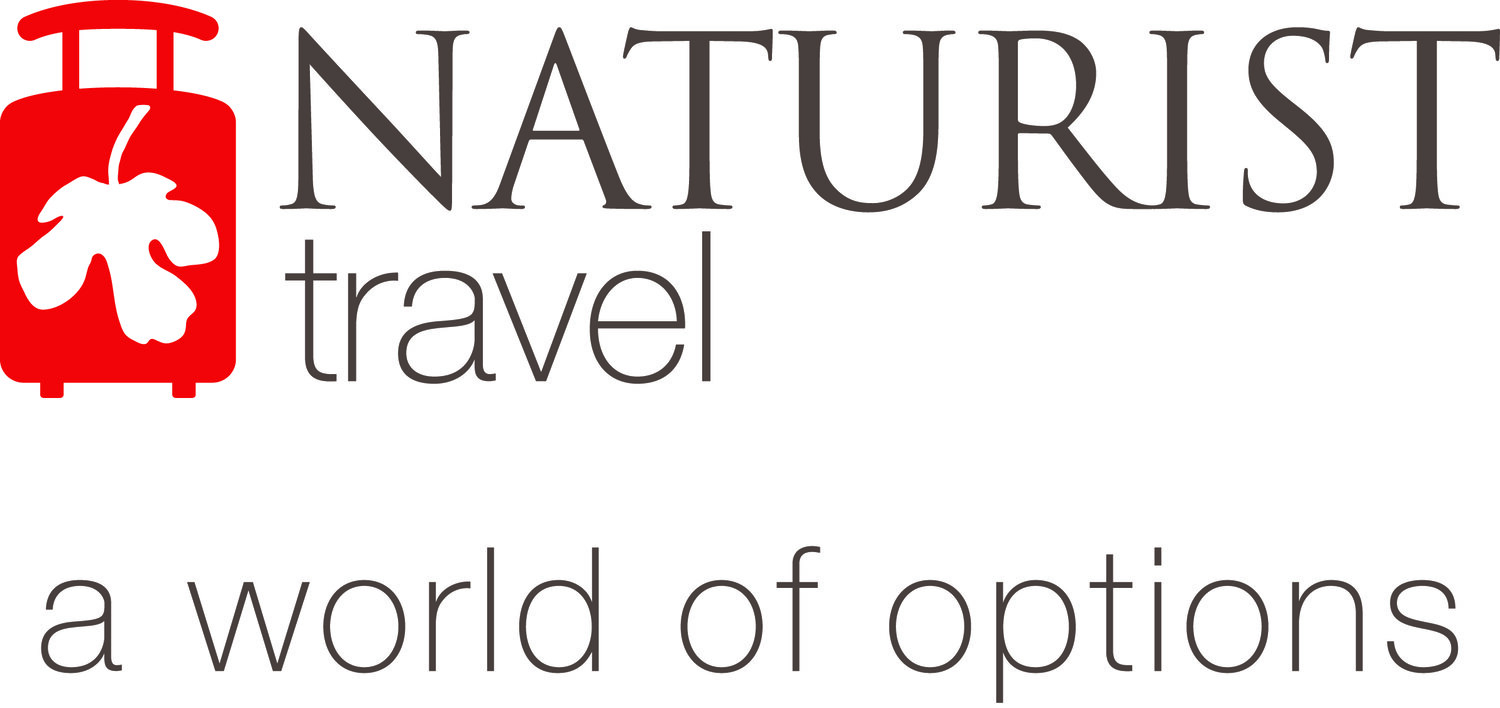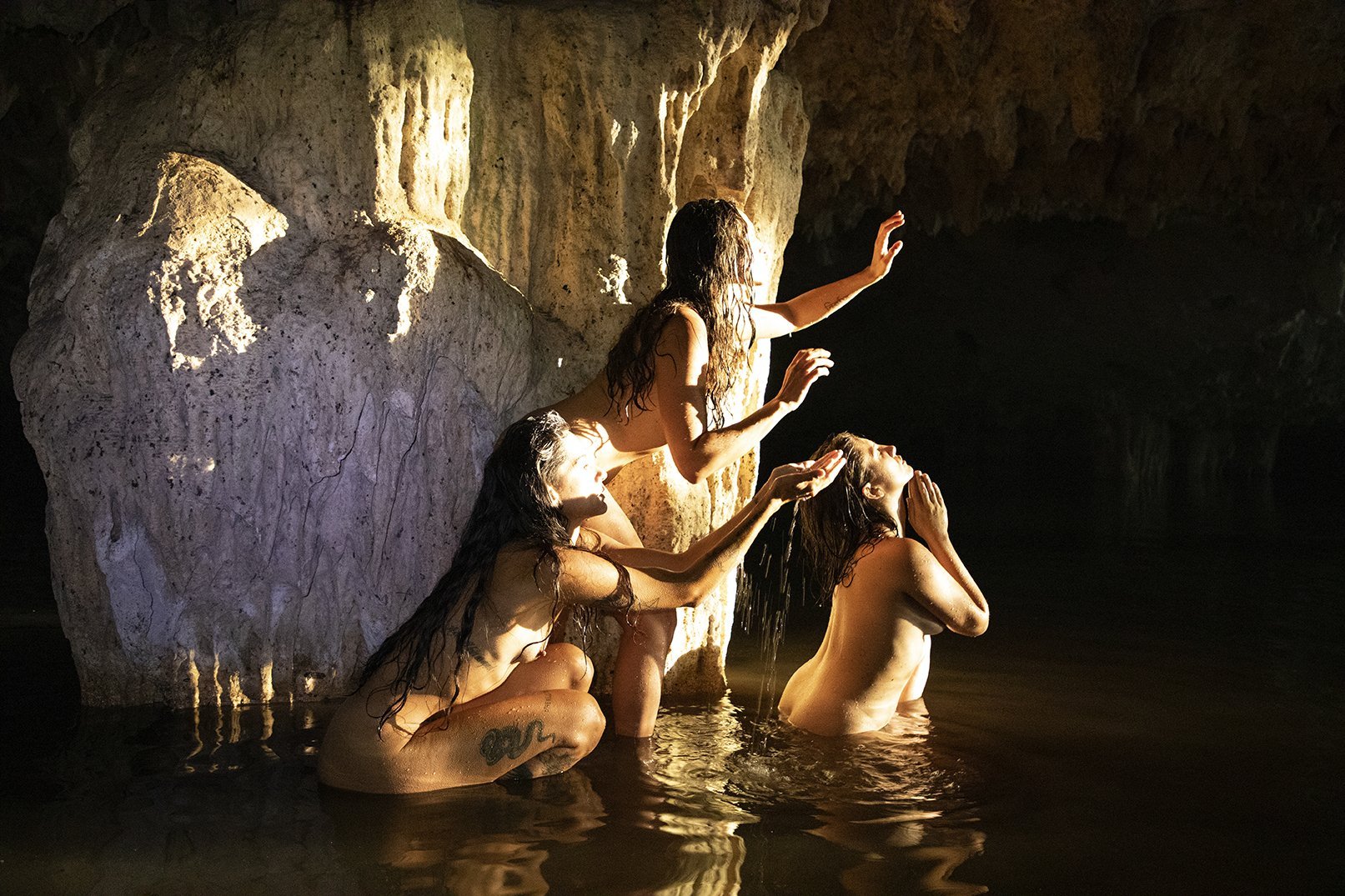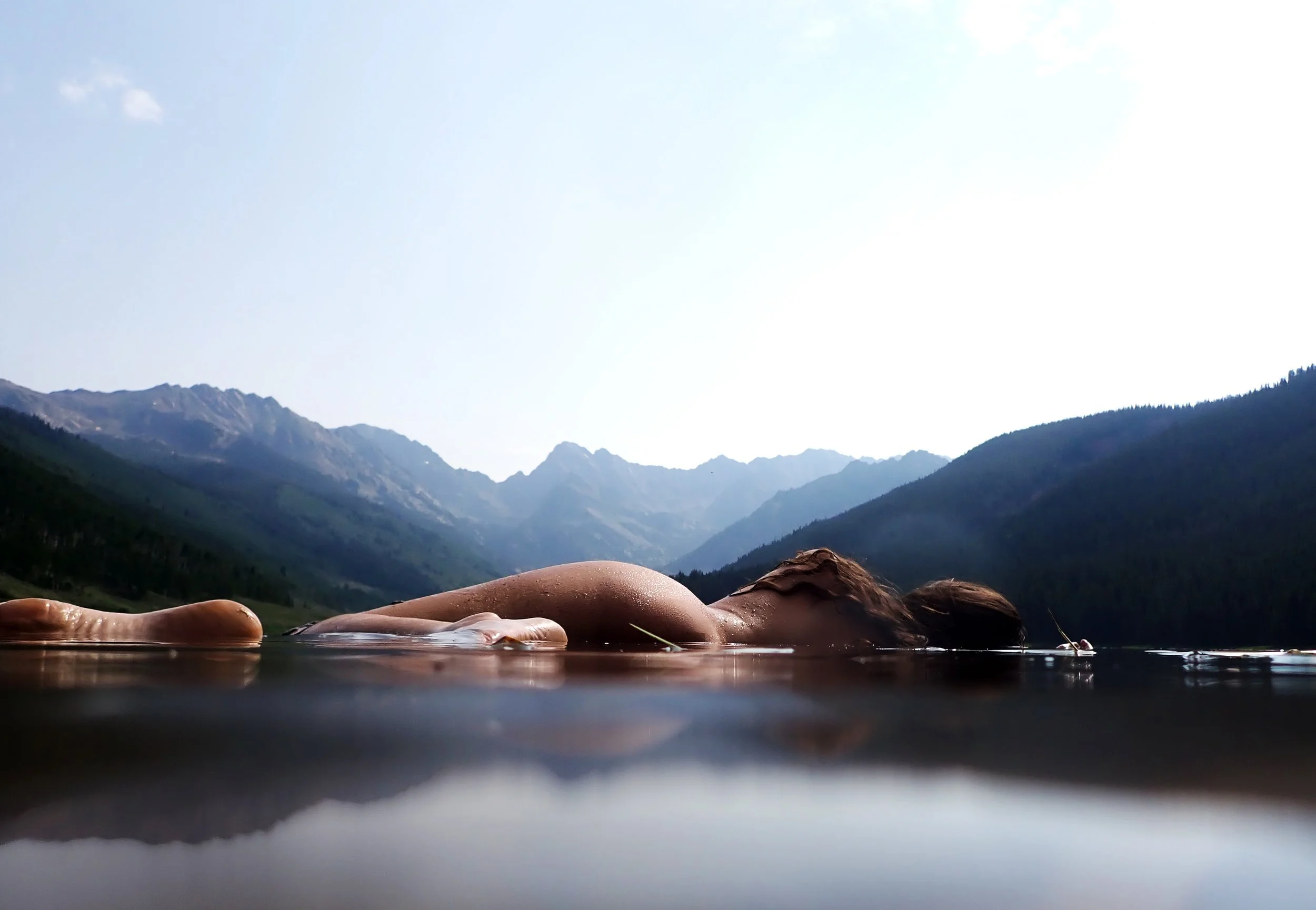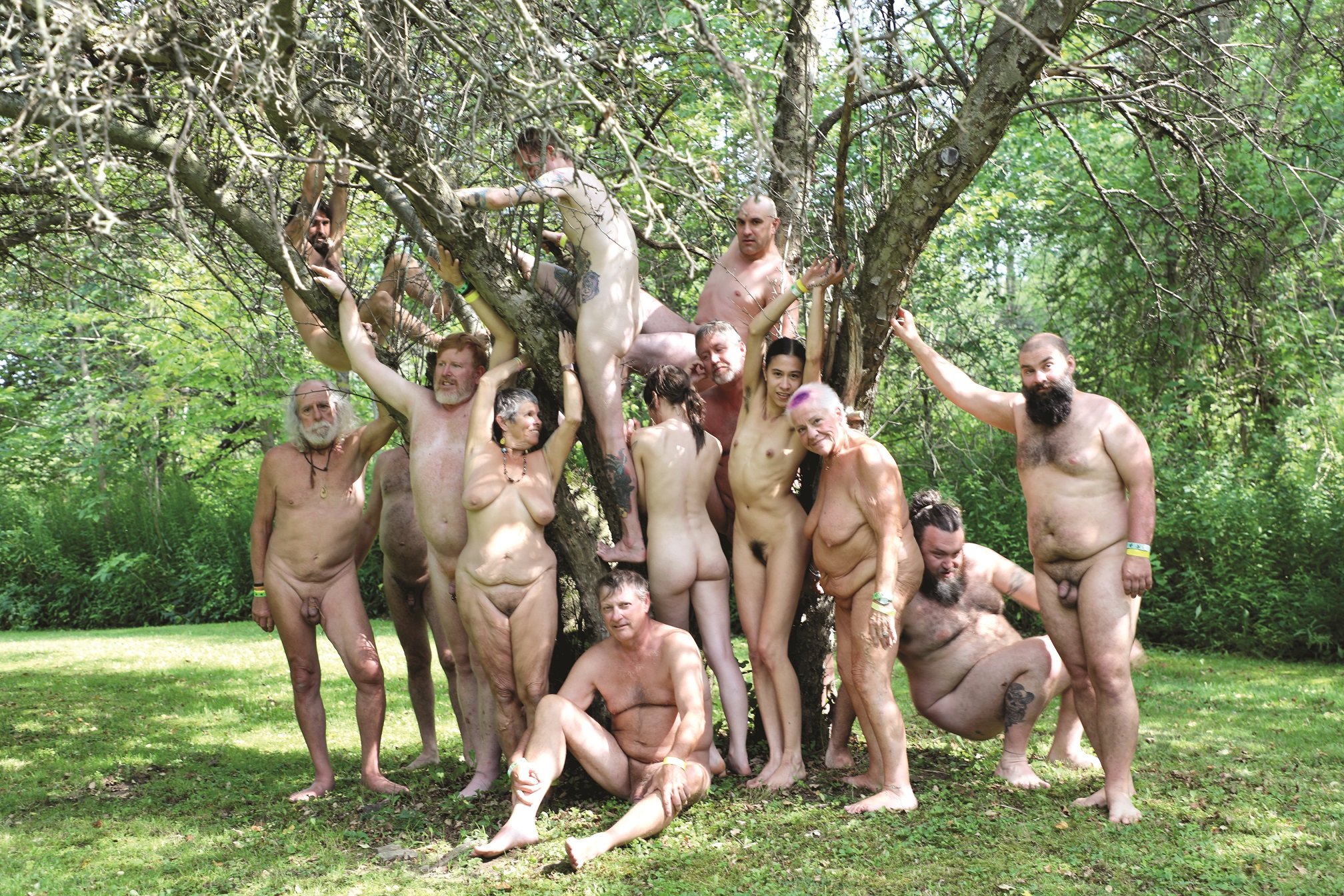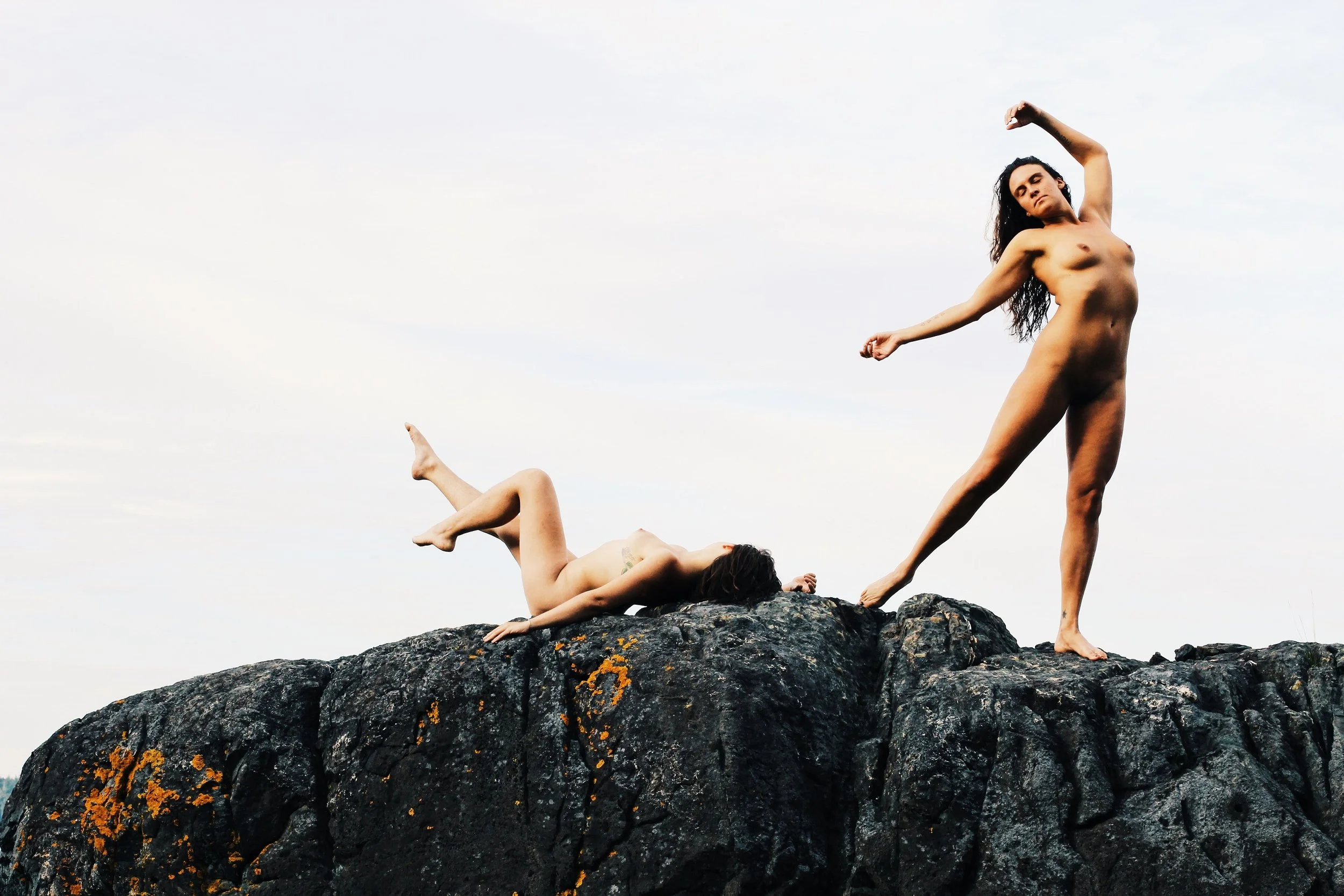Growing pains
Elsa Maria Keefe’s background has strongly influenced her view of the human body - and her art.
INTERVIEW: Elsa Maria Keefe’s background has strongly influenced her view of the human body - and her art. Interview by Paul Rouse.
Being brought up in what she describes as a ‘hippie’ family, it should come as no surprise to find that American photographer and videographer Elsa Maria Keefe has a relaxed attitude to nudity. But it wasn’t always so.
“I grew up in Massachusetts,” she explains, “in a small seaside town called Manchester-by-the-Sea. Yes, as in the Casey Affleck movie. My parents didn’t label themselves as nudists, but we spent a lot of time naked in nature. Unlike most American families, they didn’t bother putting on clothing and hiding their bodies from my brother and I when we were children, for example if they were getting out of the shower or sunbathing in the backyard.
“Surrounded by beautiful coastline and creative people, my concept of ‘normal’ and ‘reality’ was perhaps a bit skewed. As a family, we went on vacation to places of extreme beauty, such as Maine and Vermont: camping, hiking, living off the land, and always basking in the sun in the nude. We’d also be naked in hot springs in California, and went to St. John in the US Virgin Islands, where we’d hike to a nude beach. My parents intentionally didn’t have TV in the house, to mitigate any side-effects from profit-driven subliminal messaging, and I wasn’t even allowed to have a Barbie doll in the hopes of helping to eliminate some of the early potential impacts on body image.”
So what changed?
“In my pre-teen and teenage years I began to fall victim to our societal norms and desire for the unattainable standard of beauty put forth by mass media. My friend showed me porn on her older brother’s computer when I was ten, which had some sort of subliminal impact. And I began obsessing over fashion magazines and body image. Much of the freedom that was instilled in me as a child dissipated as I began to change into a young woman, and I became completely self-conscious and self-loathing. Although my mind began to wander and wish that I looked different, better, more slender, smaller and more beautiful, I continued to excel in sports and at school. So I wasn’t totally messed up!”
Passion
Elsa’s passion for drawing and painting also morphed into a love for photography, “when I received my first camera,” she admits. “And I went to Europe for the first time on a family trip. We visited friends in London, Paris and Switzerland. I fell in love with Europe and with photography during this trip. I began printing my photos, making collages in journals, and then later in shadowboxes, using pieces of paper and rhinestones from magazines and craft stores. One friend told me that I would be a famous artist someday. I just laughed because I just wanted to be a successful in business, working in an office, making a reliable income.
“Although nudity wasn’t a huge part of my life in high school, I did occasionally go skinny dipping, and went naked or topless kayaking in Maine with my one ‘wild’ friend at the time, but for the most part I was extremely self-conscious of my changing body and ‘fat’ physique compared to the women I saw in magazines.”
Splitting her time between travelling in Europe and studying at university in North Carolina, Elsa majored in Strategic Communications, encompassing mass media, PR, graphic design, advertising and marketing, and it was around this time that she “fell into fine art photography, shooting myself and friends in abandoned buildings, warehouses, and on train tracks, with stylised clothing and lingerie. My focus was on fashion and the generic aesthetic of that world, and I began doing product shots and client shoots for local businesses.
“One day however during a photo critique, my professor began questioning my work, which on that specific day was comprised of images I took of my best friend, a model who was blonde, thin, tall, perfect, posed in the studio with lingerie. I didn’t choose her out of a crowd, we were just soulmates; and yet I couldn’t defend myself, or my work. The questions kept coming stronger, more piercing: why are you shooting someone that looks like that? Why is she posed that way? Why is she wearing that style of clothing? What message are you trying to send to the viewers?
“I didn’t know how to answer. In that moment I realised that I was contributing to the contrived, idealised, unattainable standard of beauty that had harmed my very own psyche over the years. I was partaking in the production of imagery, saturating our visual landscape with more of the same generic, shallow, classically beautiful yet expected photographs. I was devastated. And yet knew that I wanted to create change, positivity, and show beauty in a new way.
“The professor asked me: have you ever thought about shooting nudes?” And that was my lightbulb moment: not just nudes, but nudes in nature.”
Connection
Elsa’s first nude shoot was in Maine, in the landscapes of her childhood. “I’d always had a deep connection to the earth,” she explains, “so it was only natural for me to capture the body there. My early work was primarily wide-angle landscapes, with the nude form in the distance. I finished college, moved to New York, and started selling my photographs. And became the archetypal starving artist! But I also created some video work, specifically documentaries, and as I progressed, my work began to focus more on the human form.
“In addition to shooting friends and family - I never hire models, although I do have a lot of friends who model professionally, and it is always a pleasure to shoot them as they know how to move their bodies with ease and confidence - I have used my own body as the subject in many of my photos. Self-portrait work has been an extremely healing experience for me. The process of seeing my body in front of the camera over the years has been an ongoing catharsis. Moving on from those early landscapes, I’ve also begun getting closer and closer to the subject: the naked person in front of the camera.”
Over a period of time, Elsa’s work began to get noticed: she contributed to exhibitions, started making sales, and had her first solo show. She was also evolving personally.
“At this time, I still didn’t officially consider myself a nudist, until I took a trip with my mom to a hot springs and nudist resort in Colorado. Then a friend invited me to a naked dinner party in Brooklyn, where I took some naked photos. As soon as I walked in, I felt like I was ‘home.’ I told my friend that at last I felt like a real nudist, and she laughed, telling me that I was the only one who didn’t know!”
One thing Elsa did notice however about most of the nudist events she then began attending: the preponderance of men, mostly older men, with only a few women. It was what prompted her to start organising women’s nude healing circles, to help women become more comfortable in their skin, and attempt to try to balance out the gender dynamics within the nudist community.
She took courses in healing the body and mind through physical and spiritual practices, hosting healing circles “where a wide variety of women would show up and get naked together,” as she describes it. “They weren’t ‘nudists.’ Many of them had never been naked outside of the bedroom or locker room. But it was transformative for them. And me. I began integrating the nude circles with my photography, and also began performing naked on stage at my art shows, reciting poetry, integrated with songs and dance.”
Introspection
During lockdown, Elsa concentrated on editing, shooting, taking time for introspection and producing a large-scale mixed media series of her work, self-publishing several coffee-table books, which she hopes “a larger publishing company might now pick up.” She has also relocated to the country, an hour north of Manhattan, into a large, renovated barn that serves as her studio, gallery and living space.
“I’ve also created a new brand called Tantric Earth Body, hosting nude women’s healing circles and retreats both locally and globally, to help women (and sometimes men) connect with their bodies and sensual selves. I tend to work with, and shoot, females more frequently, only because I’m female and it’s easier for me to connect with them. I love shooting men too, it’s just a little less common, as some men assume that what I do is sexual or will lead to sex, which is not the case. The first time I did an open-call ‘nude in nature’ photoshoot, ten men showed up and one woman. I’m a Libra. I like equality.
“I also work with Nudism TV as a creator and brand ambassador, and am currently looking for gallery and museum opportunities to show more of my work. I also consider myself something of an ambassador for naturism. Whether I’m naked in Times Square, or nude in nature, I love having in-depth conversations with people about the topic of nudity with regard to oneness/connection with the earth, body-positivity and innocence versus sexuality.
“These days, I never work in a studio. On location is where the magic happens. Sunlight is so beautiful and irreplaceable. Studio settings, manmade objects and technology can’t beat the truth or replicate the boundless and everlasting beauty of the earth. My favourite places to shoot include hot springs, cenotes (natural holes) in Mexico, anywhere underwater, and among the rocks and deserts out West, yet the world is so big and beautiful, there is so much to explore. I love travelling, and my dream is to purchase some land where I can run naked and free with loved ones, friends and strangers who share my vision, dreams and passion for feeling the sun on the skin, and living a healthy, holistic, sustainable lifestyle.
“You could say I’ve come full circle.”
